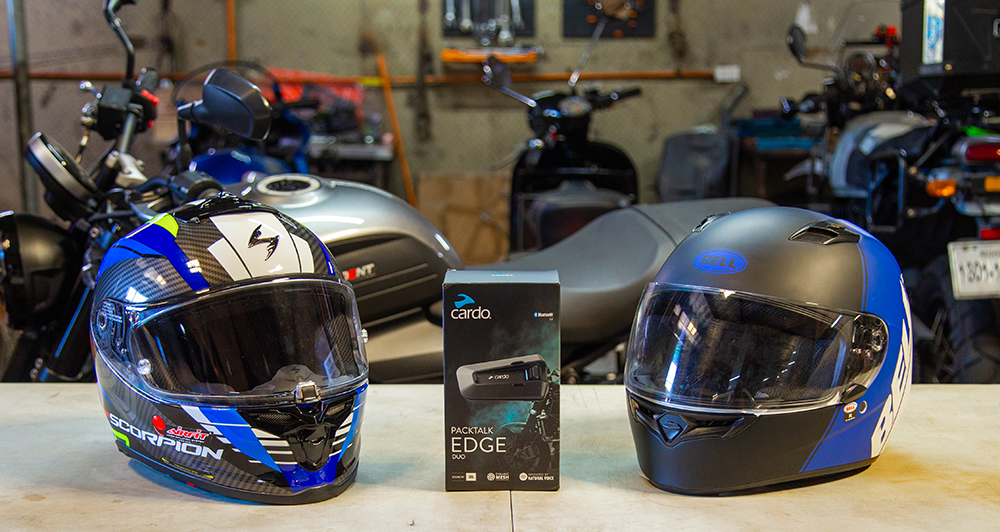
Contrary to popular belief, motorcycles get stuck in traffic, too. Flashes of EDSA on a Friday night and the southbound lane of the Candaba Viaduct that never seems to be in a state of good repair come to mind. But I digress.
During these times, flipping the gas tank’s keyhole cover to entertain oneself gets old quickly. As a motorcyclist, if you’ve ever wished you could listen to some of your favorite bops or call a loved one to keep you company, then you need a helmet communicator.
Although it mainly provides convenience and entertainment, in a group ride it’s also a safety tool. Unlike a two-way radio that requires the push of a button to be heard and only one party can speak at a time, rider-to-rider communication over helmet comms is more like a Facetime group call in practice. Once all the riders in the group are connected to each other, everyone can speak at any time.
The lead rider can use this line of communication to warn the group of upcoming obstacles, provide navigation instructions, and rib on the slowpokes. I’ve found it particularly useful when overtaking on rural roads. The lead rider can find an opening and tell the next rider whether it’s safe to pass, and each rider that gets through can guide the next guy past.
What we have here is one of the most prominent motorcycle communication devices on the road today. It’s the Cardo Packtalk Edge. So, let’s get onto installing this bad boy.
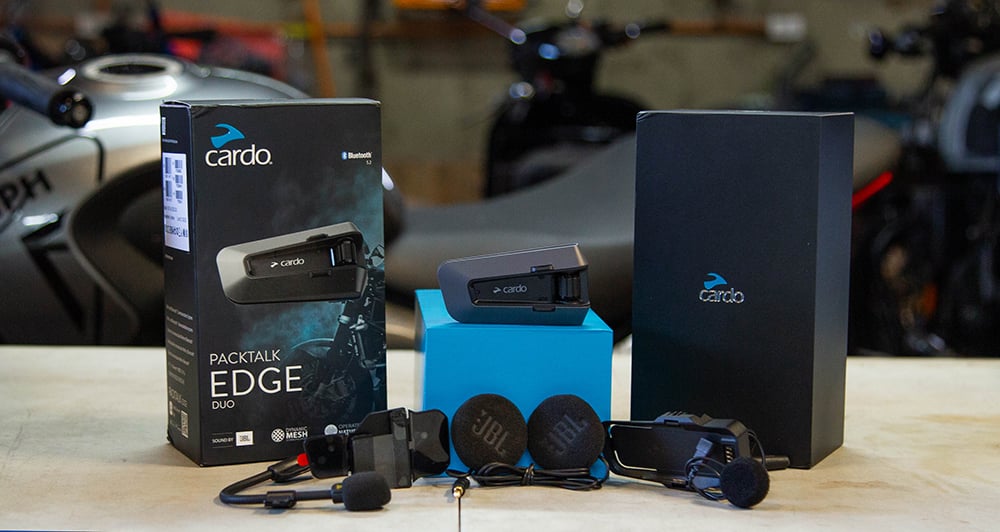
Inside the box of the Packtalk Edge, you will find the unit itself, a pair of speakers, two microphones, two mounting brackets, the unit cradle, and alcohol cleaning pads.
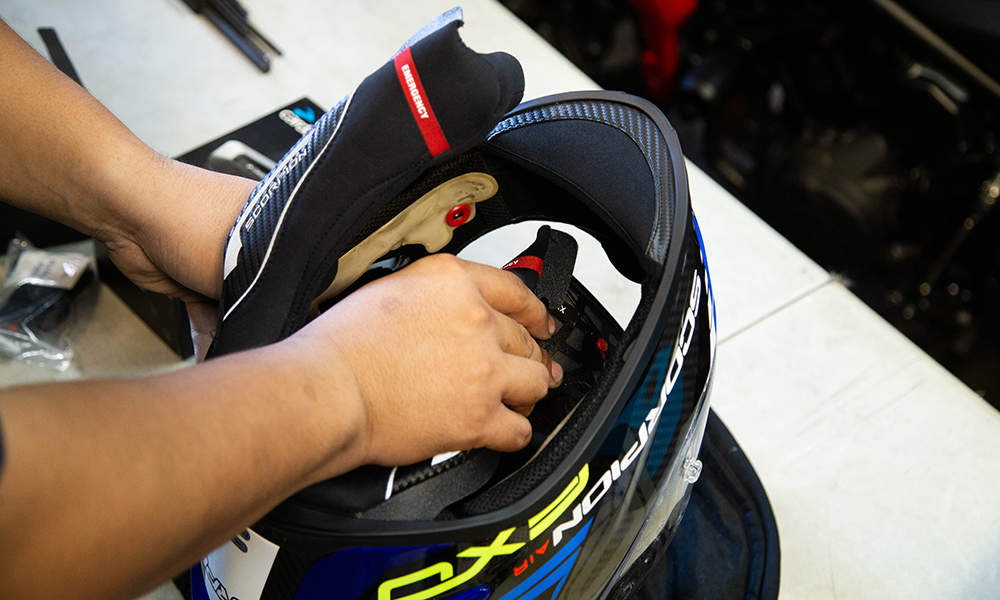
Start by removing the cheek pads of the helmet.
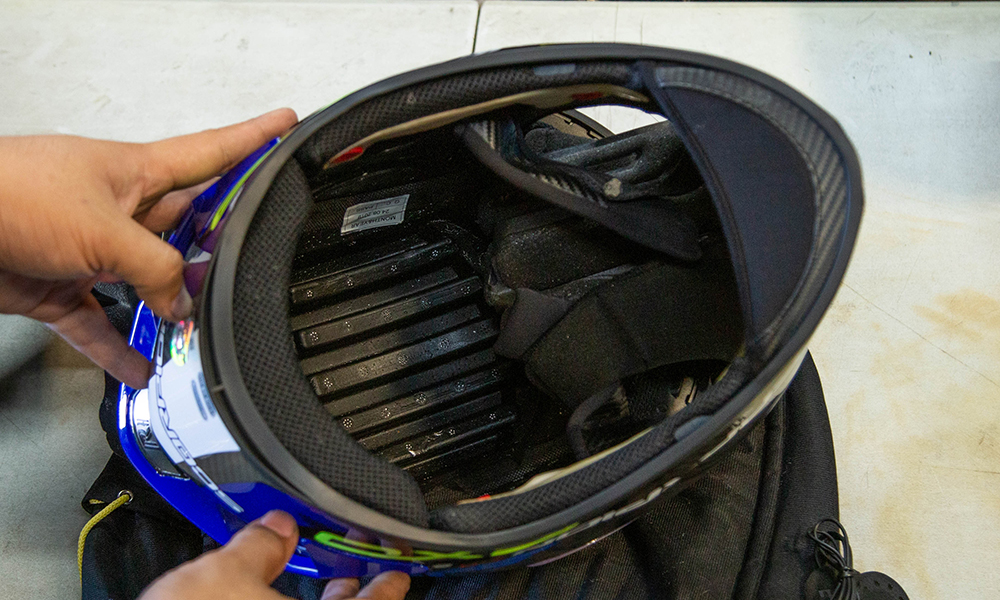
Peel back the headliner. Remove completely, if needed.
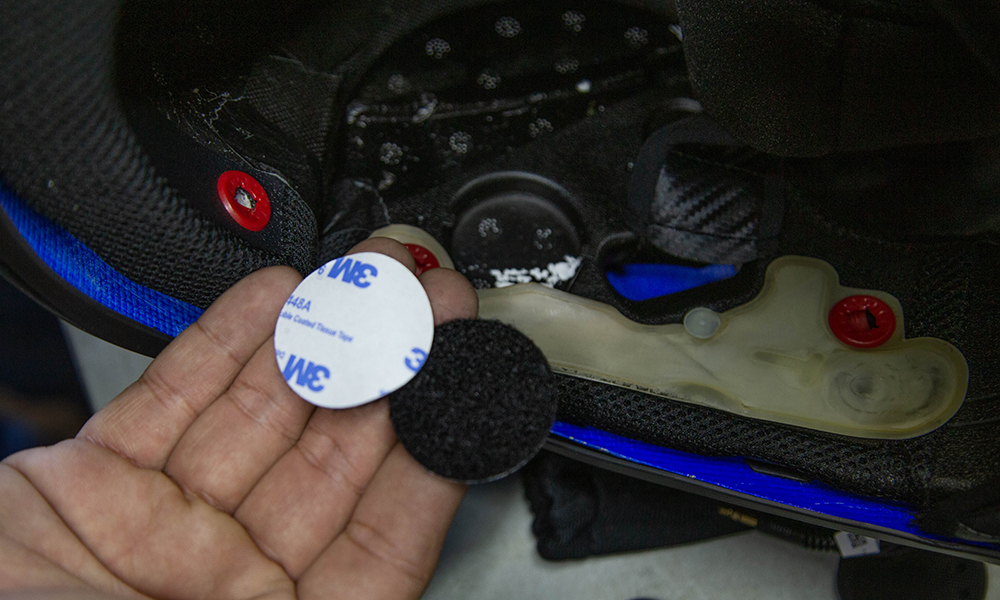
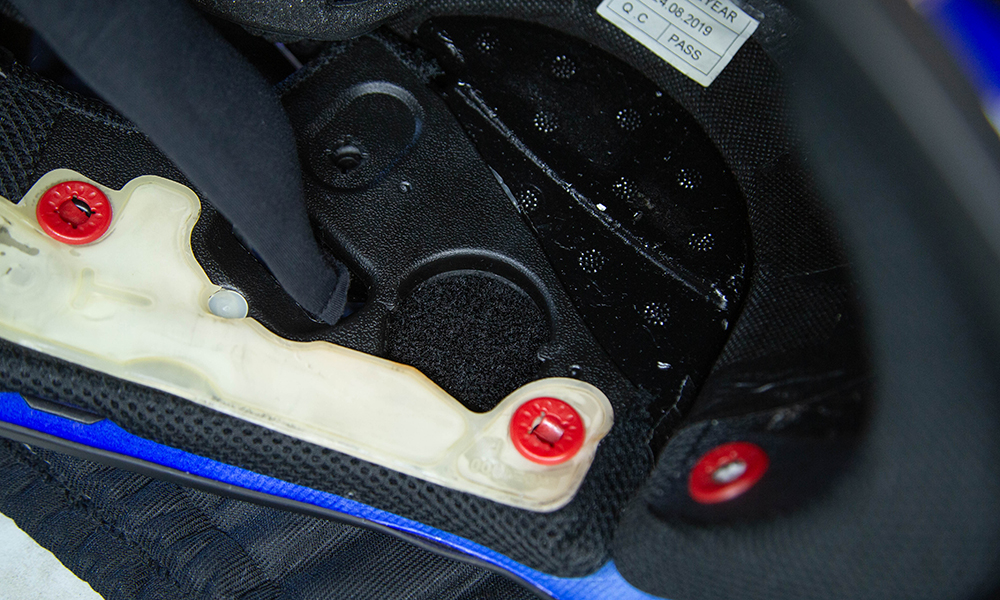
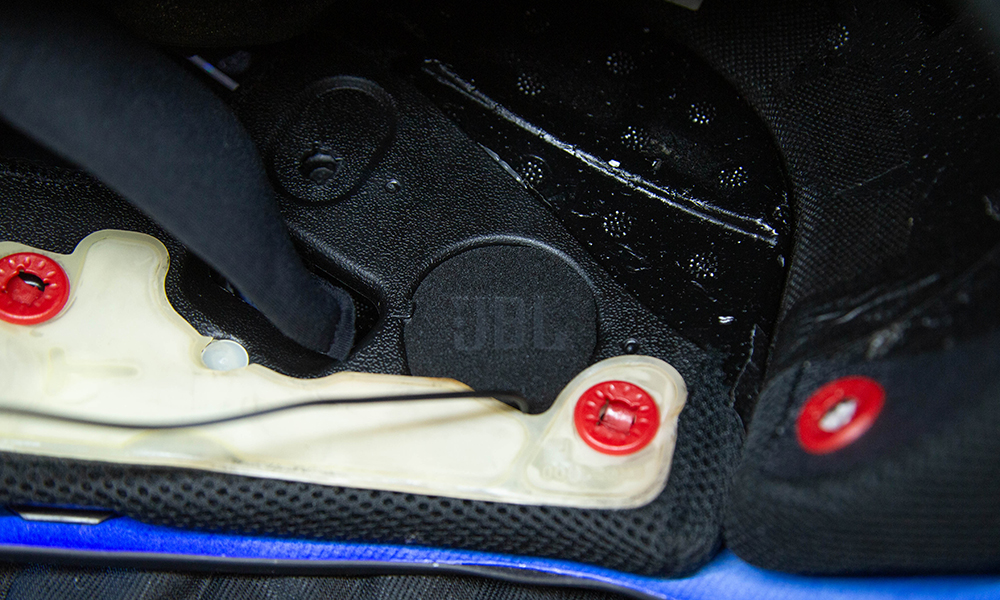
Locate the speaker pockets. Wipe down with the alcohol pads included in the box before sticking the velcro pads.
Once done, install the JBL speakers. Not all speaker pockets are the same size. For deeper ones, the box also includes a pair of velcro spacers.
For pockets smaller than the speaker, some modification is needed. And for helmets with no speaker pockets, there’s hope for you. All you need is a hole saw and some elbow grease.
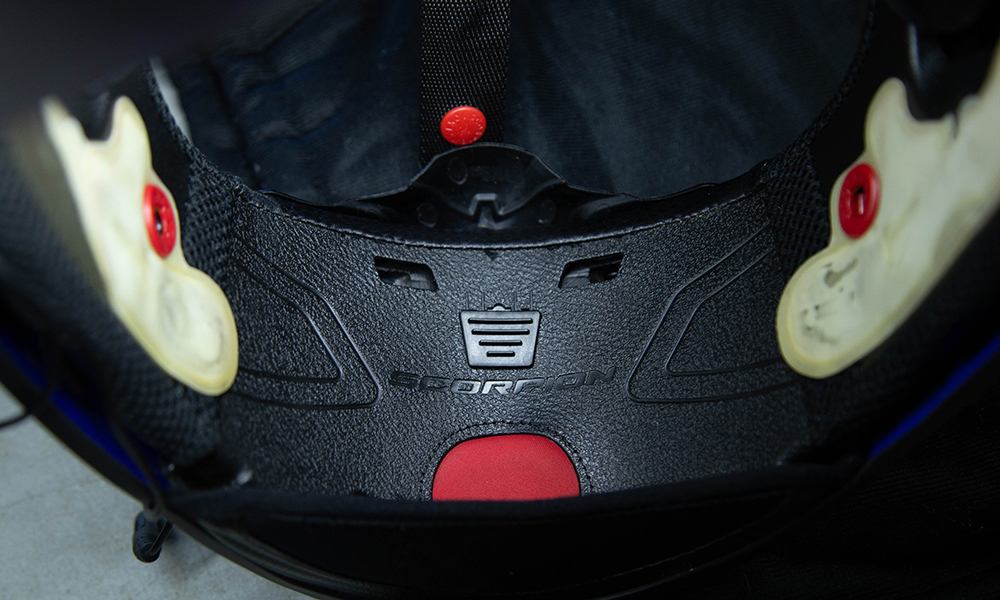
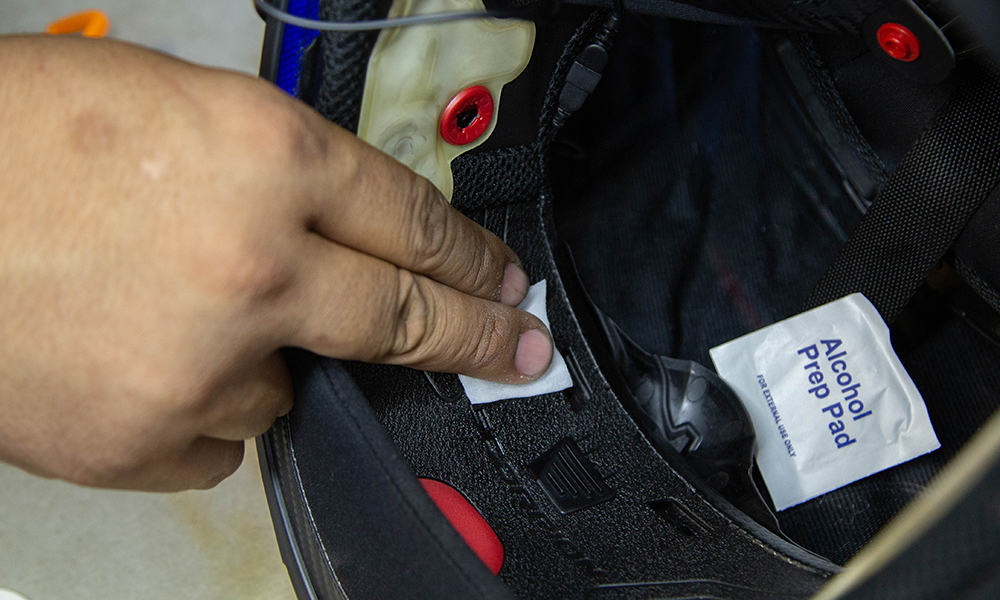
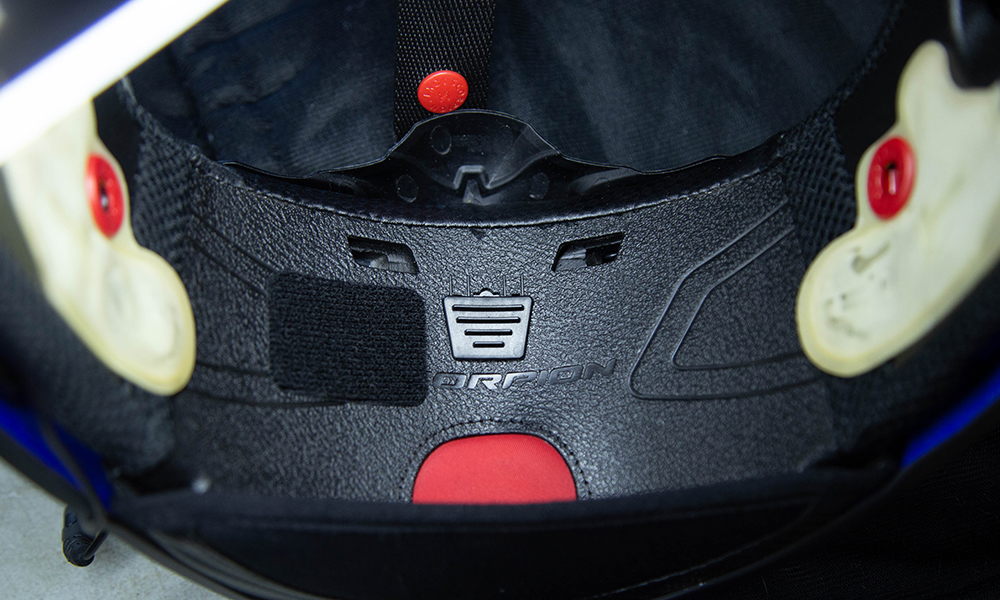
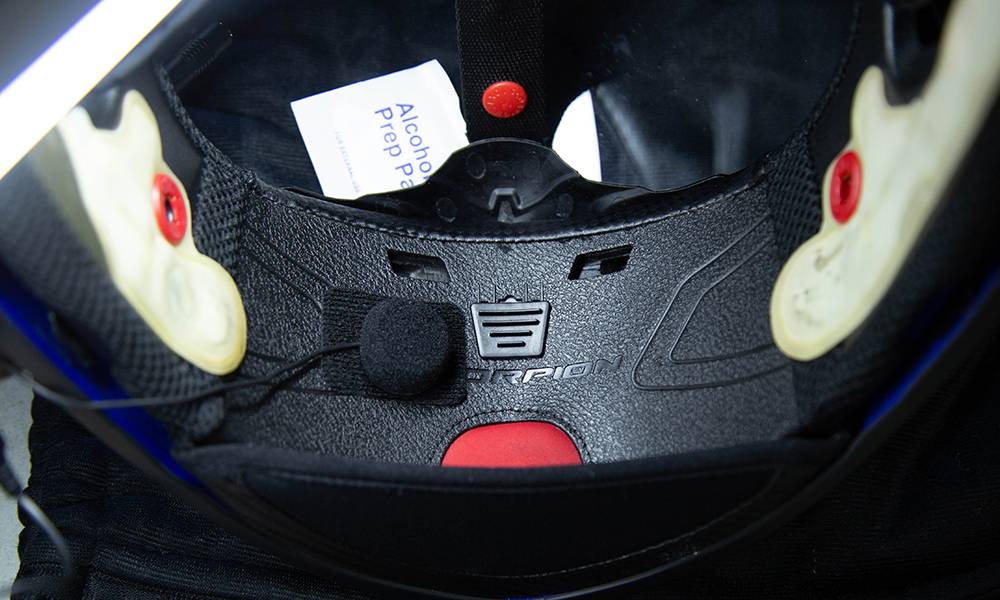
Approximate the area where your mouth faces the chin bar. Clean the area with the alcohol prep pads and apply the velcro pad where the mic will attach. Make sure to avoid the chin bar vents.
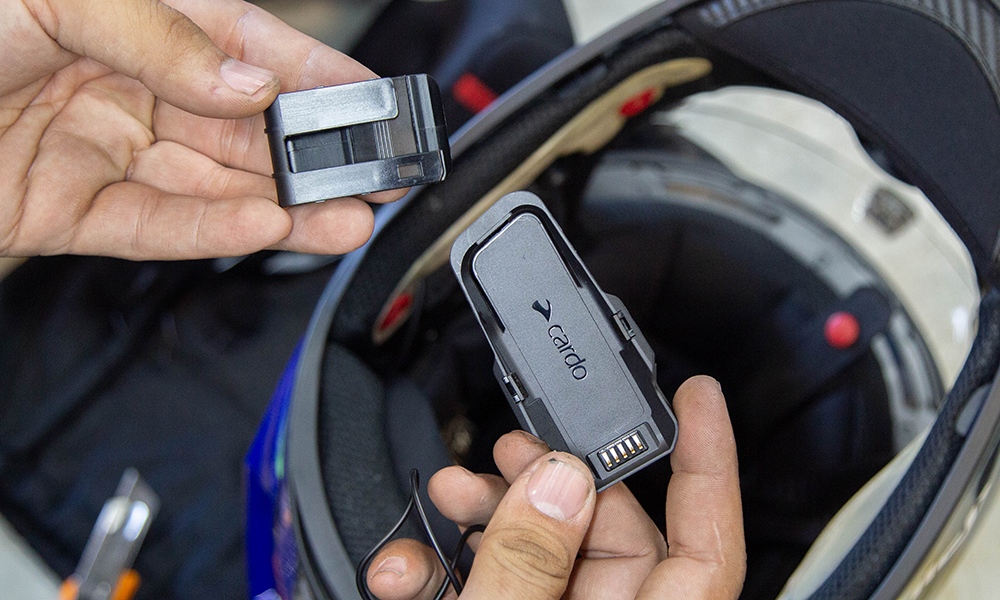
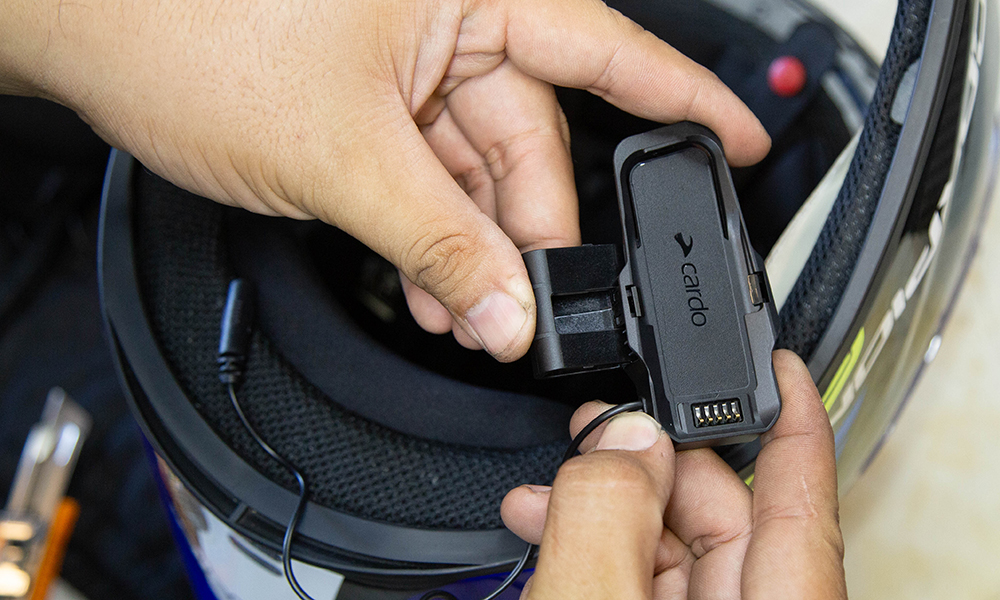
Mate the unit cradle to your preferred mounting attachment. The box includes a clip (pictured here) that slips in between the shell and the pads, and one that uses heavy-duty adhesives to cling to the exterior of the helmet.
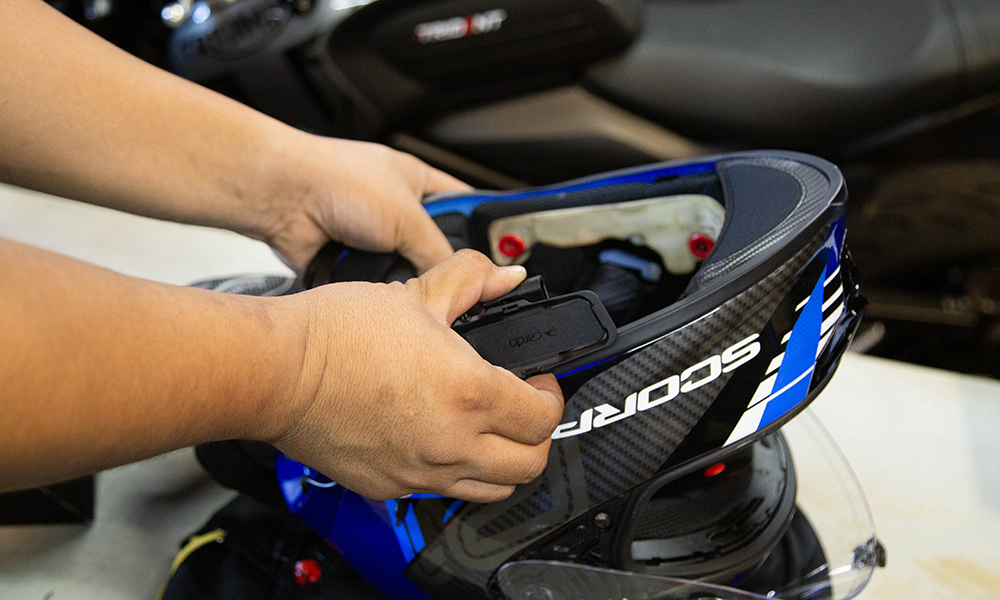
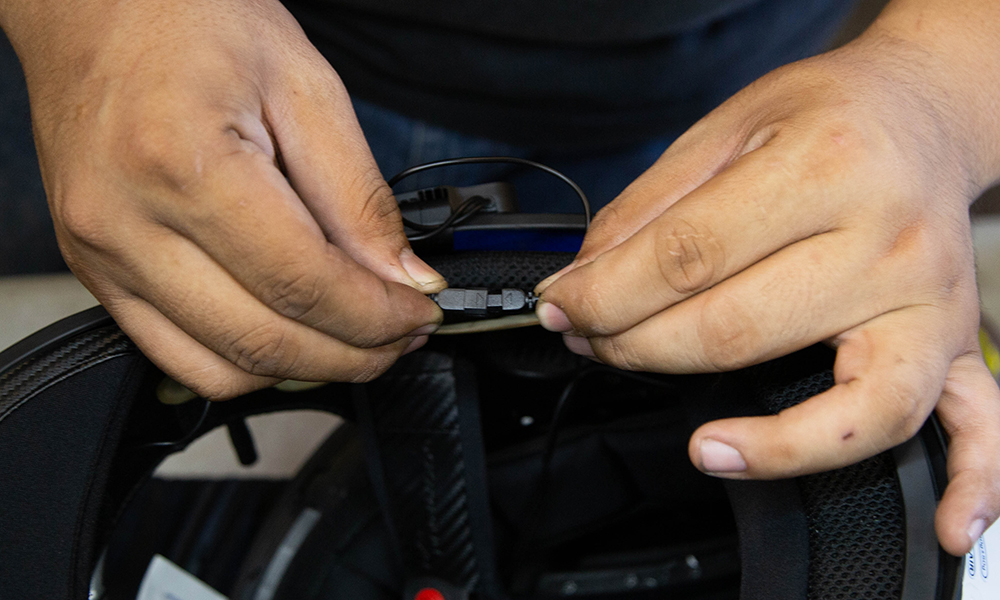
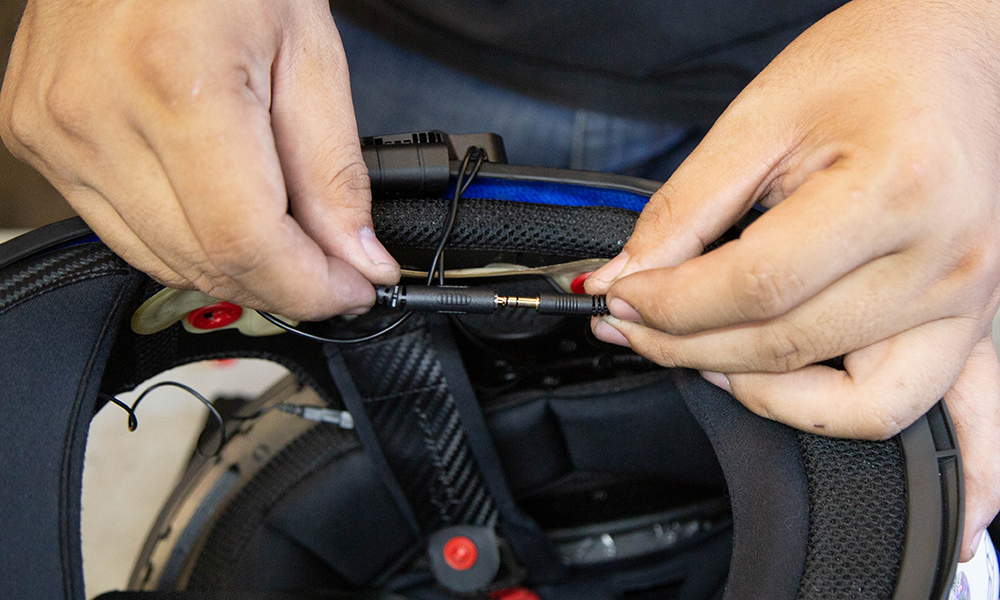
Plug the leads of the microphone and the speakers into the cradle.
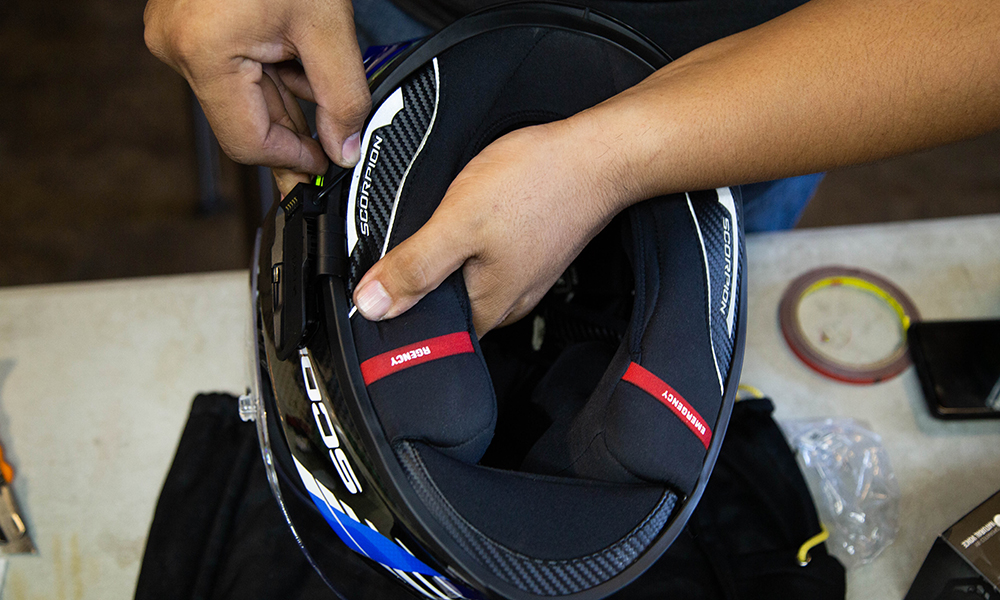
Put all the pads back into the helmet and tuck all the wires behind it. Watch out for wires getting caught in the clips.
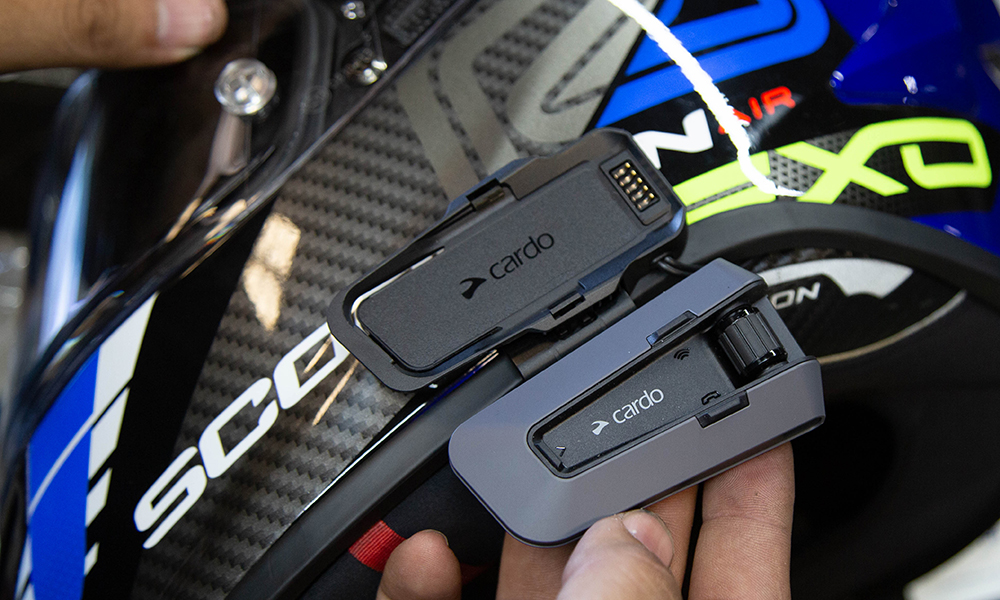
Finally, hover the unit over the cradle, and the magnets should pull it right on.
The entire process is fairly straightforward, and should take less than 10 minutes from start to finish. The steps are largely the same for any helmet. However, without a chin bar to mount on, half-face and modular helmets will need Cardo’s hybrid (gooseneck) microphone that is also included in the box.
Once installed, it’s time to pair it with your mobile phone. One thing that sets Cardo apart from cheaper brands is the Cardo Connect app. Instead of having to do everything blindly by pressing and holding a combination of buttons on the unit itself to activate functions, the app acts as a remote control for the myriad of capabilities and adjustments available.
For operating the device on the move, the Edge can also recognize voice commands, and even pull up Siri or Google Assistant. You can do everything via the “Hey, Cardo” prompt from making and taking calls and changing music tracks to adjusting the volume.
It is important to note that you will need to integrate your music app into Cardo Connect and allow Cardo access to your phone’s voice assistant for the voice commands to work. You can even check the unit’s battery status just by saying, “Hey Cardo, battery status.” No, it does not answer back in Coco Martin’s voith voice.
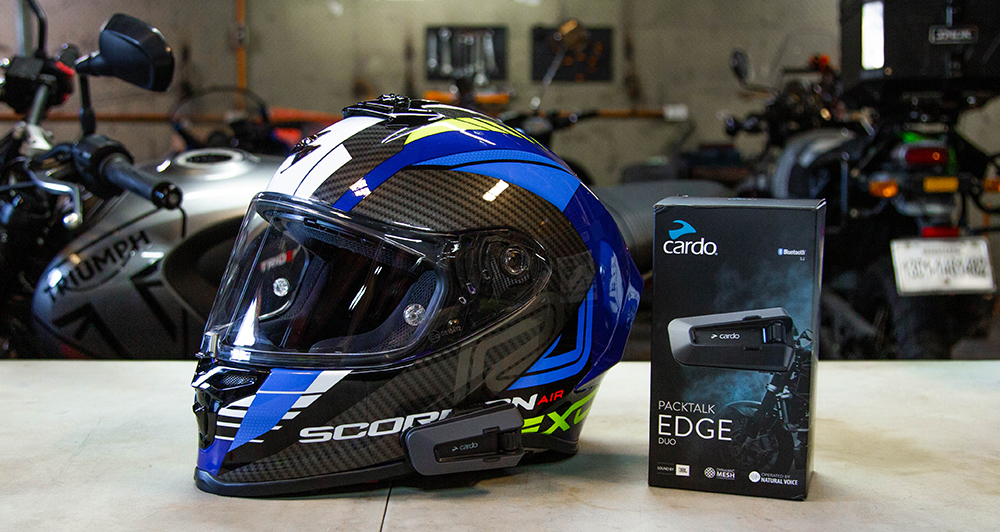
Premium features of the Edge include pairing with other brands, listening to music even while the communicator lines are open, and a private chat feature where you can isolate a conversation to only be between you and another rider in the group. It is also IP67 water- and dust-resistant, so riding on trails and in inclement weather is no issue.
JBL speakers, which used to be an optional accessory for the Bold and the Black, now come standard with the Edge. The audio quality from these is crisp and relatively clear. There’s a decent amount of separation, and can also be tuned via the equalizer on the app.
In real-world use, the Edge proved to be a convenient piece of kit. Putting it onto the cradle has never been simpler. It was common for Bold and Black units to fall off the cradle because owners would miss the clips while putting them on. Cardo has eliminated that risk by using magnets to pull the unit onto the cradle.
Comms that rely solely on Bluetooth will require riders to link up one by one in a chain. Therefore, if someone in the middle goes out of range, the whole connection breaks up. Not to mention the amount of time and fidgeting it takes just to get everybody hooked up. But with Cardo’s Dynamic Mesh Communication (DMC) technology, connecting with other riders is simple and lightning-fast. A group of up to 15 riders can be linked up in a matter of seconds. Even when the group breaks up, those in close proximity to each other still remain connected. Once regrouped, reconnection happens in an instant. It works so flawlessly, in fact, that it feels so natural.
It’s not perfect, though. Cardo claims a range of 1.6km between devices before the connection is lost. However, in testing, connections start to break up way before that. The battery is supposedly good for 13 hours of talk time, but we rode six hours with this unit and ended the day with just 20% of juice left.
There’s quite a bit of interference as well while on DMC. We would sometimes hear riders from a different group or lines would get choppy even in close range. And although the Cardo can connect to a communicator from any brand, my voice arrives as whispers you can barely make out on non-Cardo devices.
After you’ve acquired a full set (helmet, gloves, jacket, pants, and boots) of safety gear, a helmet communicator should be next on your to-buy list. The Cardo Packtalk Edge is a premium product with prices ranging from P17,000 to P19,000 depending on the seller.
It’s by far the most expensive communicator you can buy. But even with the steep price tag, it’s no surprise that the Cardo Packtalk is the most ubiquitous helmet communicator out there. It comes with a lot of premium features and conveniences that you simply cannot get with other cheaper devices, making it objectively the king of communicators today.


0 Comments